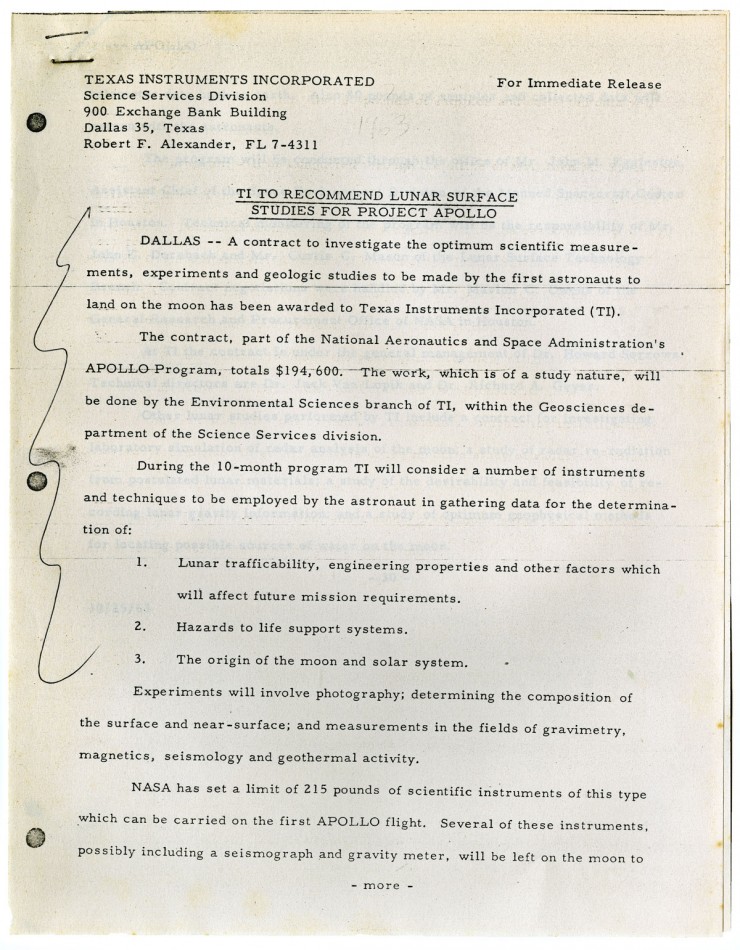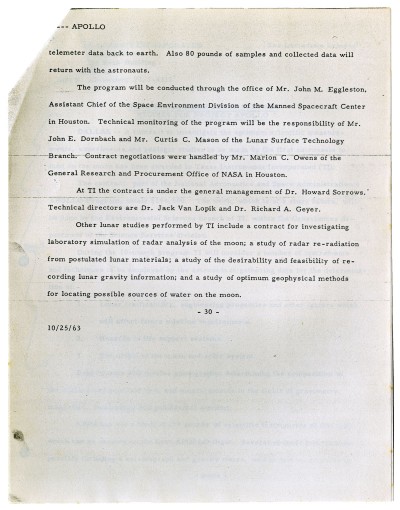
Texas Instruments Press Release from the Lester Strother Texas Metro Magazine collection, UNT Special Collections
On July 16, 1969, Neil Armstrong, Buzz Aldrin, and Michael Collins embarked on a journey to the moon as part of the Apollo 11 mission. (Or, if you are one of the many who believe the moon mission to be a hoax, they either pretended to go to the moon while simply orbiting the Earth several times, or they actually took off to a film studio). Whatever really happened, Dallas-headquartered Texas Instruments played an exciting role in developing technology necessary for the trip, as well as guidelines for what sorts of experiments should be conducted while on the lunar surface.
The Lester Strother Texas Metro Magazine collection contains a variety of materials pertaining to the role of Texas Instruments in the Apollo 11 mission. This press release from Texas Instruments provides details about a contract from NASA to “investigate the optimum scientific measurements, experiments and geologic studies to be made by the first astronauts to land on the moon.” The contract provided $194,000 for a 10-month program out of TI’s Environmental Sciences branch.

Texas Instruments Press Release, Page 2 from the Lester Strother Texas Metro Magazine collection, UNT Special Collections.
During this 10-month period, Texas Instruments considered the most valuable methods astronauts could use to make discoveries about the moon. Some of the issues NASA was concerned with included lunar trafficability, hazards to life support systems, origins of the moon, and whether water deposits existed.
Texas Instruments was founded in 1951 after the company Geophysical Service reorganized. Fred Agnich, later a member of the Texas House of Representatives, served as president from 1956 to 1961. TI has had its hands in the space industry, semiconductors, defence electronics, military computers, missiles, and even consumer electronics like clocks and handheld calculators. In 1997, TI sold its defense business to Raytheon.
Much more information about the role of Texas Instruments in the Apollo 11 mission and other endeavors in outer space can be found in the Lester Strother Texas Metro Magazine collection. The Texas Metro was founded in large part to market the growing southwest metroplex and the DFW airport. The collection includes 183 linear feet of articles and photographs from the magazine, as well as other grey literature.
-by Alexandra Traxinger Schütz



Leave a Reply